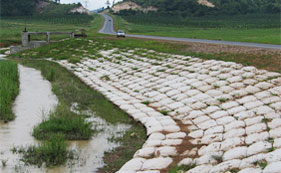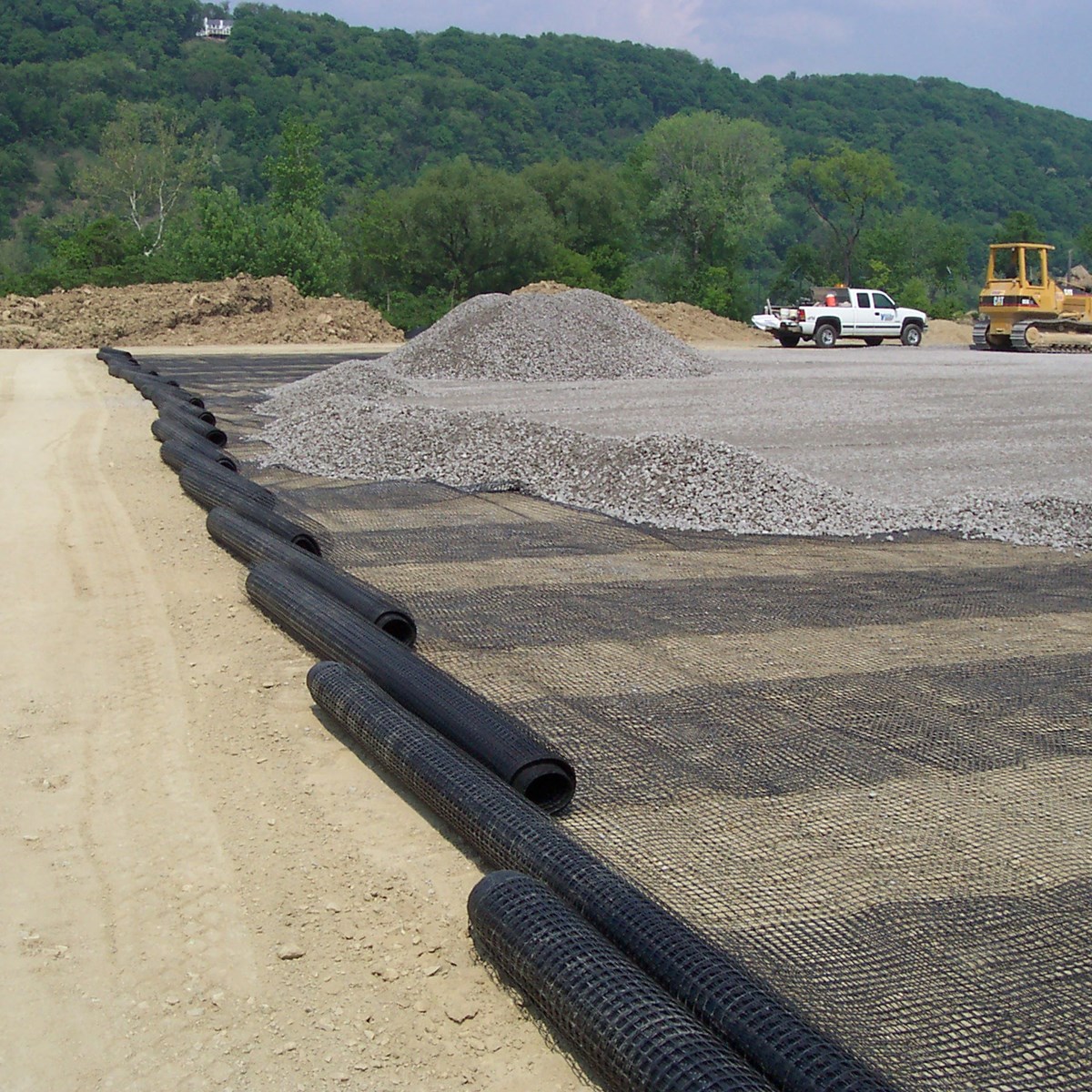
 Back to List
Back to List

The two-way stretched plastic geogrid is formed by extruding high molecular polymers to form a sheet, punching holes, and then stretching longitudinally and transversely. The two-way stretch plastic geogrid is suitable for all kinds of embankment and roadbed reinforcement, side slope protection, cave wall reinforcement, and foundation reinforcement for large airports, parking lots, docks and freight yards. Because the two-way plastic grid has many advantages: such as increasing the bearing capacity of the road (foundation) and prolonging the service life of the road (foundation). It can prevent the road (ground) from collapsing or cracking, and keep the ground beautiful and tidy. Moreover, the construction is convenient, time-saving, labor-saving, shortening the construction period and reducing maintenance costs. In addition, it can replace the metal mesh and be used for false roof meshes in coal mines. Therefore, the two-way plastic grid is widely used in actual construction, and it is suitable for large-area foundation reinforcement construction.
The main application areas of two-way plastic grids include: reinforcement of roadbeds of various highways, railways, and airports; reinforcement of load-bearing foundations of large parking lots and docks and freight yards; slope protection of railways and highways and reinforcement of culverts; unidirectional stretch geogrid The secondary reinforcement of the reinforced soil slope further strengthens the soil slope to prevent soil erosion; mines and tunnels are reinforced.
Construction process requirements of two-way plastic grid
1. The paving surface of the geogrid should be relatively flat. After the paving layer is qualified, in order to prevent longitudinal skew phenomenon, first draw a white line or hanging line on the paving layer according to the width, and then start paving. Fix the ends of the grille with iron nails (8 nails per meter width, fixed at even distance).
2. After fixing the ends of the grille, use a paving machine to slowly pull the grille forward, and manually tighten and straighten it every 10 meters long until one roll of grille is finished, and then another Volume, the operation is the same as before. After laying a roll, use a 6T-10T roller from the starting point to roll it in the forward direction. (Such as paving on the middle layer and leveling layer, it is better to use a steel roller roller; if the grating is directly spread on the concrete pavement, it is better to use a rubber roller roller.)
3. Splicing: take the roll length as the unit of the length of the paving section. After the section length of the grid should be paved, check the paving quality as a whole, and then pave the next section. When laying the next section, the grid and the grid can be overlapped with a length of 10-15CM, and fixed with iron nails or wooden wedges, and then continue to lay down one section in the forward direction. By analogy, the operation requirements are the same as before.
4. Two-way plastic grid construction process detection, cleaning the lower bearing layer → manual laying of the geogrid → overlapping, binding, fixing → paving the upper subgrade soil → rolling → inspection
5. The geogrid is laid on the flat underlayer according to the width required by the design. The upper and lower fillings are free of debris from the geogrid. When laying the geogrid, the direction of high strength should be arranged perpendicular to the axis of the embankment. , The geogrid is laid horizontally, and it is tight and stretched during laying to avoid wrinkles, twists or potholes. The geogrid is spliced in the longitudinal direction using the overlap method, and the overlap width is not less than 20cm.
6. After the geogrid is laid, manually lay the upper layer of filler, complete rolling in time to avoid long-term exposure, and then use mechanical transportation, leveling, and rolling. Mechanical paving and rolling are advanced from both sides to the middle. The two sides move toward the middle, and the compaction degree is maintained to meet the specification requirements.
7. Prevent all construction vehicles and construction machinery from driving or parking on the already paved geogrid. Check the quality of the geogrid at any time during construction. If damages such as breaks, punctures, tears, etc. are found, repair or replace.
Key points of geogrid construction:
1. Construction site: request to be compacted and leveled, in a degree shape, and clear of spikes and protrusions.
2. Grid laying: On a flat and compacted site, the main force direction (longitudinal) of the grid laid by the device should be perpendicular to the axis of the embankment, the laying should be flat, without wrinkles, and as tight as possible. Fix with bolts and earth and rock weights. The main force direction of the laid grid is long and without joints. The connection between the webs can be manually bound and overlapped, and the overlap width is not less than 10cm. If the grid is installed in more than two layers, the layers should be staggered. After laying a large area, adjust its straightness as a whole. After filling a layer of soil, before rolling, the grille should be tensioned again manually or with machinery, and the strength should be even, so that the grille is in a state of tension and stress in the soil.
3. Selection of packing: packing should be selected according to design requirements. The theory proves that all except frozen soil, marsh soil, living dregs, chalky soil and diatomite can be used as fillers. However, gravel and sandy soils have stable mechanical properties and are not affected by water content, so they should be preferred. The particle size of the filler should not be larger than 15cm, and pay attention to controlling the filler gradation to ensure the compacted weight. Long-lasting foundation.